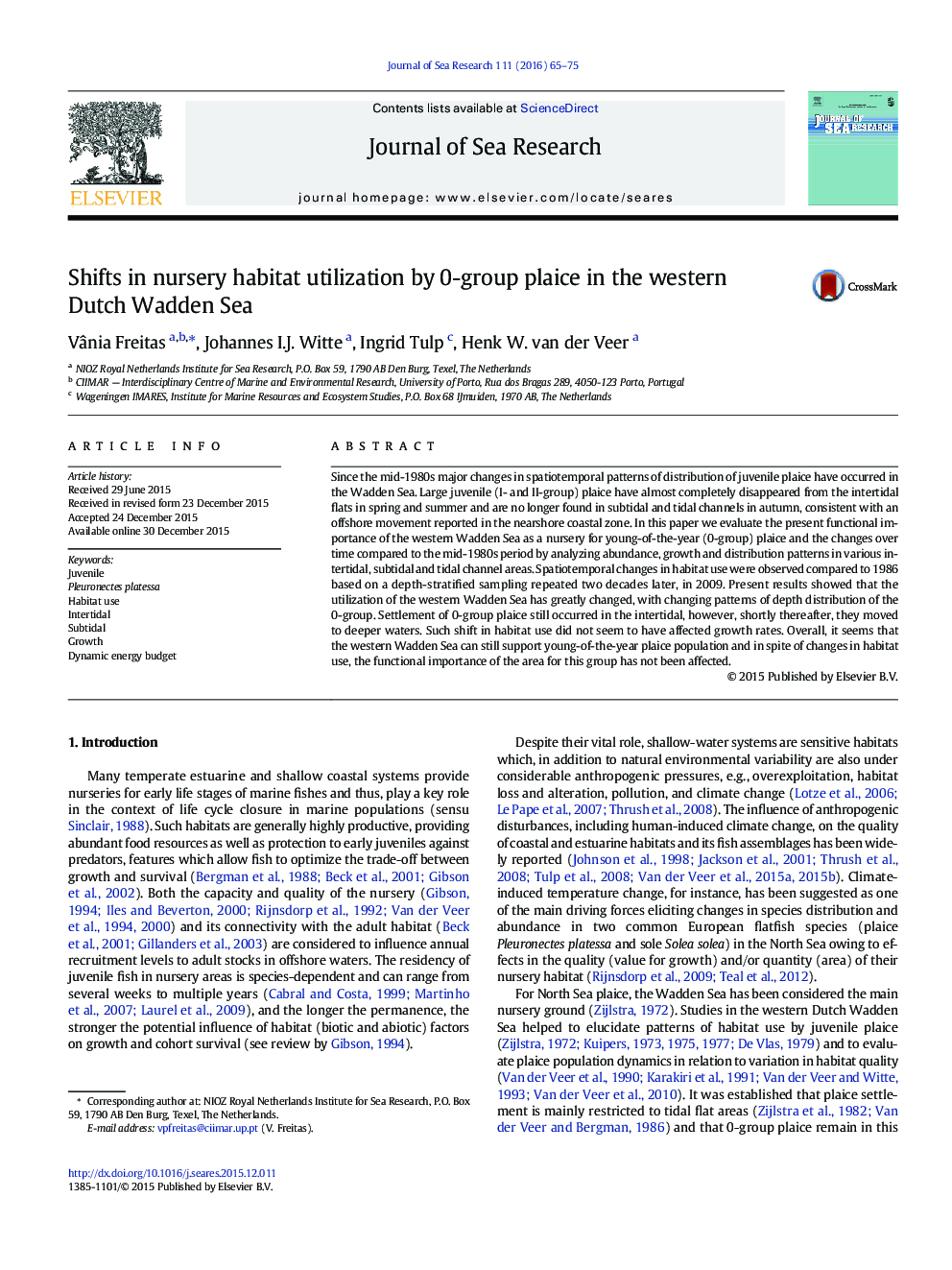| Article ID | Journal | Published Year | Pages | File Type |
|---|---|---|---|---|
| 4549507 | Journal of Sea Research | 2016 | 11 Pages |
Abstract
Since the mid-1980s major changes in spatiotemporal patterns of distribution of juvenile plaice have occurred in the Wadden Sea. Large juvenile (I- and II-group) plaice have almost completely disappeared from the intertidal flats in spring and summer and are no longer found in subtidal and tidal channels in autumn, consistent with an offshore movement reported in the nearshore coastal zone. In this paper we evaluate the present functional importance of the western Wadden Sea as a nursery for young-of-the-year (0-group) plaice and the changes over time compared to the mid-1980s period by analyzing abundance, growth and distribution patterns in various intertidal, subtidal and tidal channel areas. Spatiotemporal changes in habitat use were observed compared to 1986 based on a depth-stratified sampling repeated two decades later, in 2009. Present results showed that the utilization of the western Wadden Sea has greatly changed, with changing patterns of depth distribution of the 0-group. Settlement of 0-group plaice still occurred in the intertidal, however, shortly thereafter, they moved to deeper waters. Such shift in habitat use did not seem to have affected growth rates. Overall, it seems that the western Wadden Sea can still support young-of-the-year plaice population and in spite of changes in habitat use, the functional importance of the area for this group has not been affected.
Related Topics
Physical Sciences and Engineering
Earth and Planetary Sciences
Oceanography
Authors
Vânia Freitas, Johannes I.J. Witte, Ingrid Tulp, Henk W. van der Veer,
